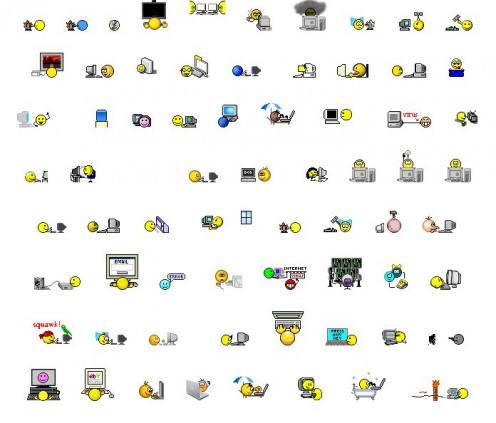History of the Smiley Face

Who Invented the Smiley?
Some people love them, some loathe them but if you spend any significant amount of time on the world wide web, you wont be able to avoid them. In a dimension where text is the general means of expression and there are no physical cues such as voice intonation or facial expression, the 'smiley face' has become a stand in for human emotional expression.
Legend has it the ubiquitous smiley was created in the early 60s by an American commercial artist called, appropriately, Harvey Ross Ball. Although versions of 'happy faces' had appeared before in popular culture, Ball was the one who came up with the iconic version we know today. The brief was to create a a happy-faced morale booster for the employees of an insurance company and Ball was paid $45 for his efforts.

Yellow Balls of Expression
Possibly the initial, viral success of Ball's smiling face came about because millions of them were printed on buttons, making them accessible and easy to distribute. In 1967, the smiley was also used in an ad campaign for a major savings and loan company, giving it even further exposure,
Spreading throughout the land like a virus, they quickly became a cultural phenomenon and merchandisers dream, appearing on diverse objects such as mugs, pencil cases and T-shirts. The celebrity status of the smiley was now assured.
POLL
Do you use smilies?
The Internet and the Smiley
By the time the internet rolled around in the 1990s the smiley was already well and truly established as a familiar, friendly face. They were a perfect match as the simplicity of the design and ease of reproduction, made it computer code compatible and user/viewer friendly.
The Friendly Face of the Digital Age
On the net, the smiley became the emoticon and was/ is used on a thousand forums as a helpful aid to self-expression. A poster could take a humorous crack at someone or something and add a winking smiley at the end to offset what might be regarded as an insult; "Hey I'm just kidding, look at my smiley". Emoticons enabled more complex expression in a highly simple way. Of course some people got irritated with this but you can't please everyone.

Scott Fahlman: Emoticon Man
It was a young University professor called Scot Fahlman who came up with the unicode for emoticons. As far back as 1982, Fahlman saw the desperate need for a circuit breaker in overheated online forums and the smiley face seemed like the obvious choice. It took only three keystrokes to make that smile materialise and within a matter of weeks emoticons appeared across the net. It was a winner and as technology got ever more sophisticated, so did emoticons, appearing as colourful animations with a full range of personalities and props.


Why has the Smiley Been so Successful?
The success of the smiley lies in the simplicity of the design. Basically it's just a yellow circle with a few dark, curving lines, yet the yellow balls are instantly recognisable by a universal audience, transcending languages and cultures. They have become the universal language for human emotion.
Not only are they easily identifiable as a symbol for happiness, anyone can recreate them. There are literally thousands of smiley faces floating around the World Wide Web, depicting a vast range of expressions - they have moved well beyond merely happy, sad, angry.


Sad Face, Angry Face...
The smiley was so successful at representing the human emotion of happiness that it wasn't long before imaginative people began devising a whole range of human emotions from sadness and surprise to seething frustration and superciliousness.
Smileys are nothing if not versatile and they've also been commandeered to represented iconic cultural memes, including vampires and comic book heroes. In a departure from the original concept, they have their dark-side, sometimes appearing as positively evil.
With familiarity comes contempt and some people have developed a violent aversion to the smiley in any form except perhaps, an ironic one, considering them so hackneyed as to be deeply uncool.


Smiling all the way to the Bank
The Smiley Company which owns the rights to the smiley face trademark is one of the biggest licensing companies in the world and owns the trademark in over one hundred oountries. That means any time a smiley face appears on a piece of merchandise [of which there are a multitude], the company gets a slice. Needless to say it has an annual turnover in the multi-millions.
Eventually the Smiley got its own stand-alone retail store, opening in London in 2011, selling clothes. home-ware and general smiley paraphernalia. Happiness sells.









